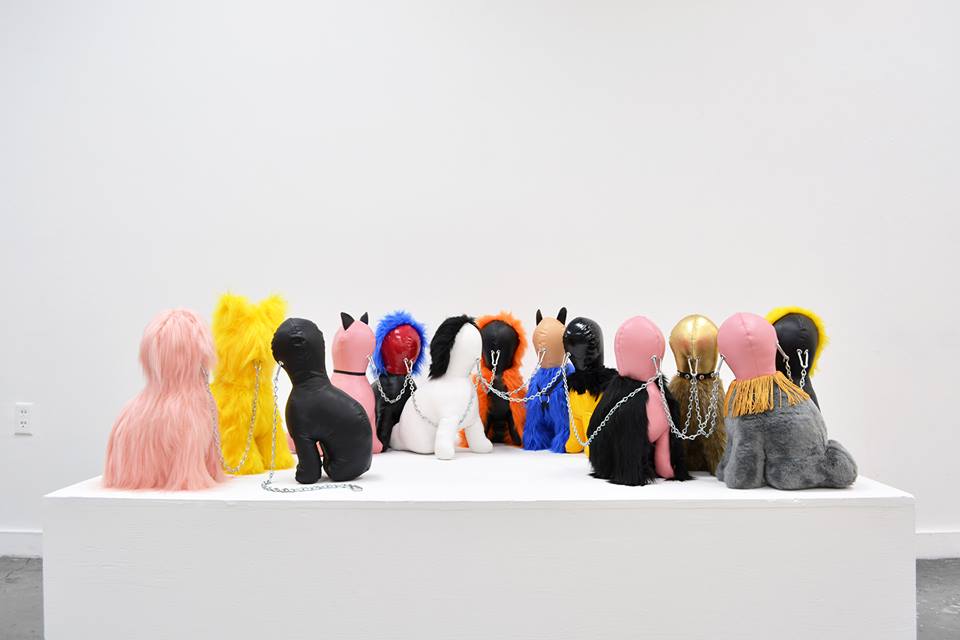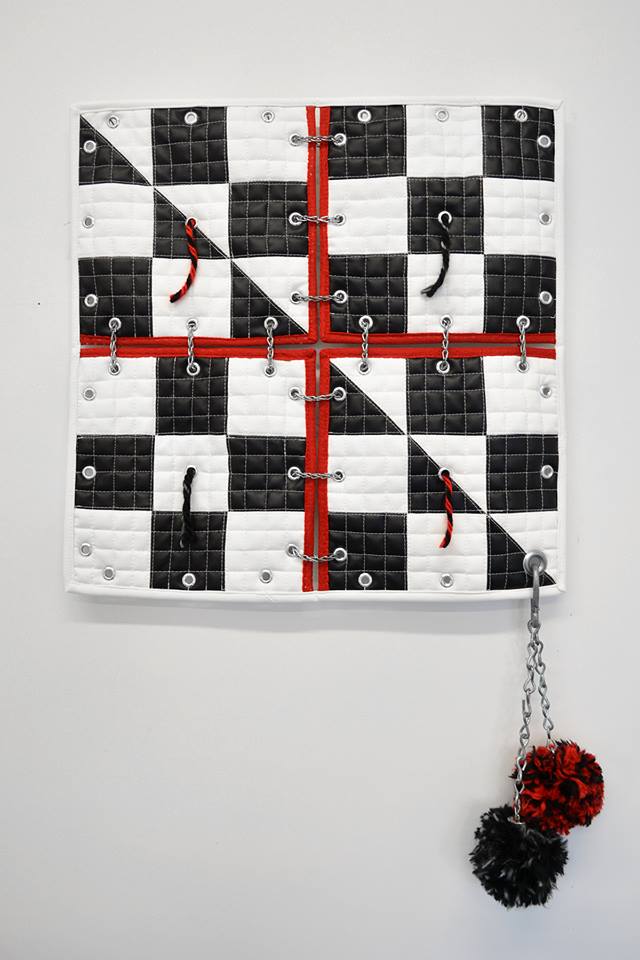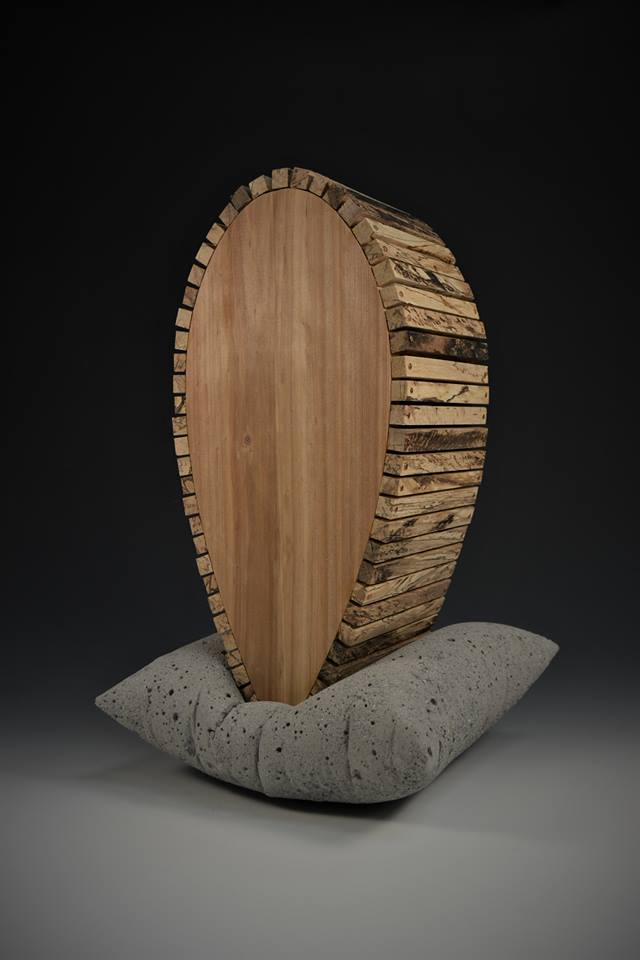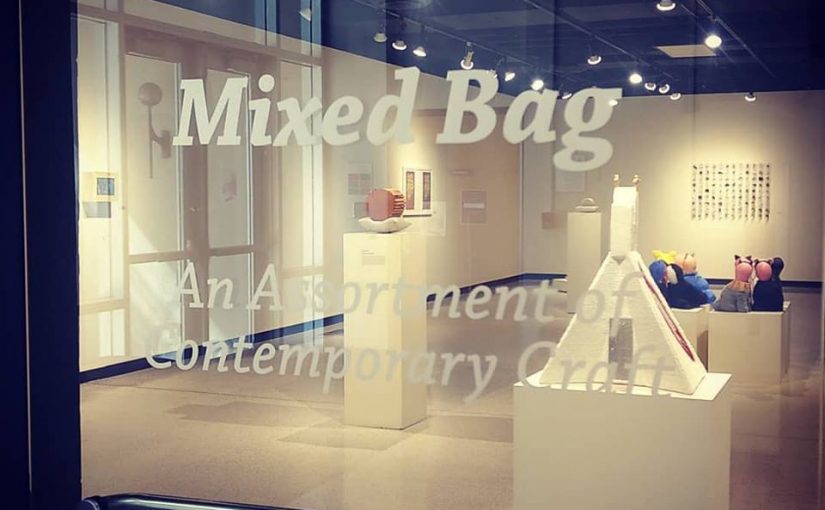By Rasheem Callender
The VSU Gallery hosts a show full of sexual innuendos. ‘Mixed Bag: An assortment of Contemporary Craft’, is an exhibition currently showing at the VSU Dedo-Maranville gallery. Mixed Bag is comprised of 5 different artists that practice craft in an artistic way . Craft has a history of not being considered an art form. These artists band together in order to disprove this common misconception. Emily Culver, Elyse-Krista Misch, Max Adrien, M. Paige Ward and Xia Zhang are among the five artists that are showing in this Exhibition. The artists that I’m choosing to focus on are Max Adrien and M. Paige Ward, two of the five artists showing.

The piece that all eyes were drawn to at the start of the exhibition was created by Max Adrien. The piece, entitled ‘The Buddy Community’, stands as a multimedia piece comprised of faux fur, faux leather, leather, spandex, chains, and other hardware. At first glance, one could admittedly mistake a ‘Buddy’ for a stuffed animal, but the buddies have been anthropomorphized. In their artist statement, the artist Max Adrien mentioned the fact that they’re exploring ideas of sexual identity within their craft, and The Buddy Community definitely proves this point. Each buddy is crafted to resemble a different individual identity experience. The piece features many buddies including a yellow furry buddy, a black latex buddy, one with pink spandex, and even a duo of blue furry Buddies are placed on their knees in a crouching position. Positioned so that they face each other, the figures are also connected by chains at the necks. In my opinion, the Buddies resemble humans more than animals.
During the exhibition, this piece was automatically greeted with sexual undertones from an array of viewers; the first word that came to mind was kinky. To quote Adrien’s artist statement directly they stated, “My work is representative of the act of becoming and working to understand our sexual desires, fears, biases, and perceptions, as we learn to share ourselves and communicate with others.” With that in mind: at the opening I posed the question, “Which Buddy would you be?” and that sparked an array of different questions and perspectives.
Having a group of people begin to form a personal connection with one of the twelve stuffed figurines became a strange yet intimate experience. It was very interesting to hear Professor Tommy Crane tell me that he would be the black and red latex Buddy because he has always felt connected to the colors red and black. He then proceeded to show me his wedding ring that also reflected the color scheme of the corresponding Buddy he felt so connected with. After his response, I had an epiphany that the piece and the moment became correspondent with the artist’s intention and the theory of Aesthetic Emotion. Aesthetic Emotion are emotions that are felt during aesthetic activity or viewing. Art can connect to a viewer in such a way that triggers emotions from the art connoisseur. Professor Evelyn Davis-Walker began to connect with the one that resembled a sheep. Sitting poised with fuzzy pink ears, this particular Buddy happened to have a white faux fur lining but the buddy has a black leather face that resembles a ‘Wolf’ in her perspective. “A wolf in sheep’s skin,” as she referred to it. I happened to connect with a yellow furry Buddy that sported a pair of dog ears simply because I enjoyed its fashion aesthetic.

Adrien also presented a Piece of a similar theme. Entitled ‘Queer Blanket’, the piece is a literal checker-printed blanket fastened with chains and metal grommets. The Blanket hangs on the wall as a black and white patterned quilt with a red outer lining. It is worthy to note that a pair of fuzzy balls made of a yarn-like material hang suspended with a chain near the bottom right corner of the piece. Given the sexual implications of the title, one could possibly interpret the use of materials to draw a similar “kinky” connection to Adrien’s other piece, ‘The Buddy Community’. Both pieces maintain the theme due to the shared material list and it helps the viewer gather the context upon analyzation of the piece. I didn’t immediately draw a Queer conclusion out from the blanket, but I do believe that the piece’s meaning was intended to be left up to the viewer.

Another artist that captured the gaze of Gallery attendants was M. Paige Ward. Ward’s work contained a series of three pieces called Foundations. The artwork that Ward is showing is formally entitled, ‘How Firm A Foundation’ (1, 4, and 5). A ‘foundation’ is a wooden dome that sits snugly on a concrete pillow. I happen to find the pieces to be visually intriguing. It is fascinating how the artist was able to realistically render the appearance of a soft and plush pillow out of a material as hard as concrete. Ward’s artist statement says, “Inspired by my faith, I utilize domestic and architectural symbols and materials to explore my longing for permanent security and comfort in the midst of a broken and transient world.” Ward’s theme of having a solid foundation made of concrete is shown through the forms displayed. The wooden dome-shaped piece placed upon the concrete pillow is very distinct. All three of the foundations vary in size and shape of the wooden pieces. In my opinion, the wooden pieces reflect the idea of Home and the pillows reflect Family. A family is a very concrete yet soft structure in a person’s life. One could use this artwork to refer to the permanence of a person’s family in their life or even the strict demands of a parent-child relationship. One could continue to speak on the dynamics of family and how those relationships create beautiful contrast when compared to comforting essence of a mother’s embrace the love from one sibling to another. This piece achieves success with conjoining a delicate structure with a firm one.
This minimalistic show made for a very interesting opening. Overall, exhibition was met with positive reviews from visitors even though the show was very different in nature from the Valdosta National that occupied the space just a week before. This show give viewers the opportunity to dive into more complex themes that the Dedo-Maranville Gallery doesn’t usually show. Themes of sexuality, self-discovery, family and familiarity were all utilized within these artworks exhibited.
Rasheem Callender is a Fine Arts student from Atlanta, GA. While in undergrad, Callender is focusing on graphic design and printmaking. After graduating, Callender will attend grad school with the expectation of becoming an art director or a curator.
